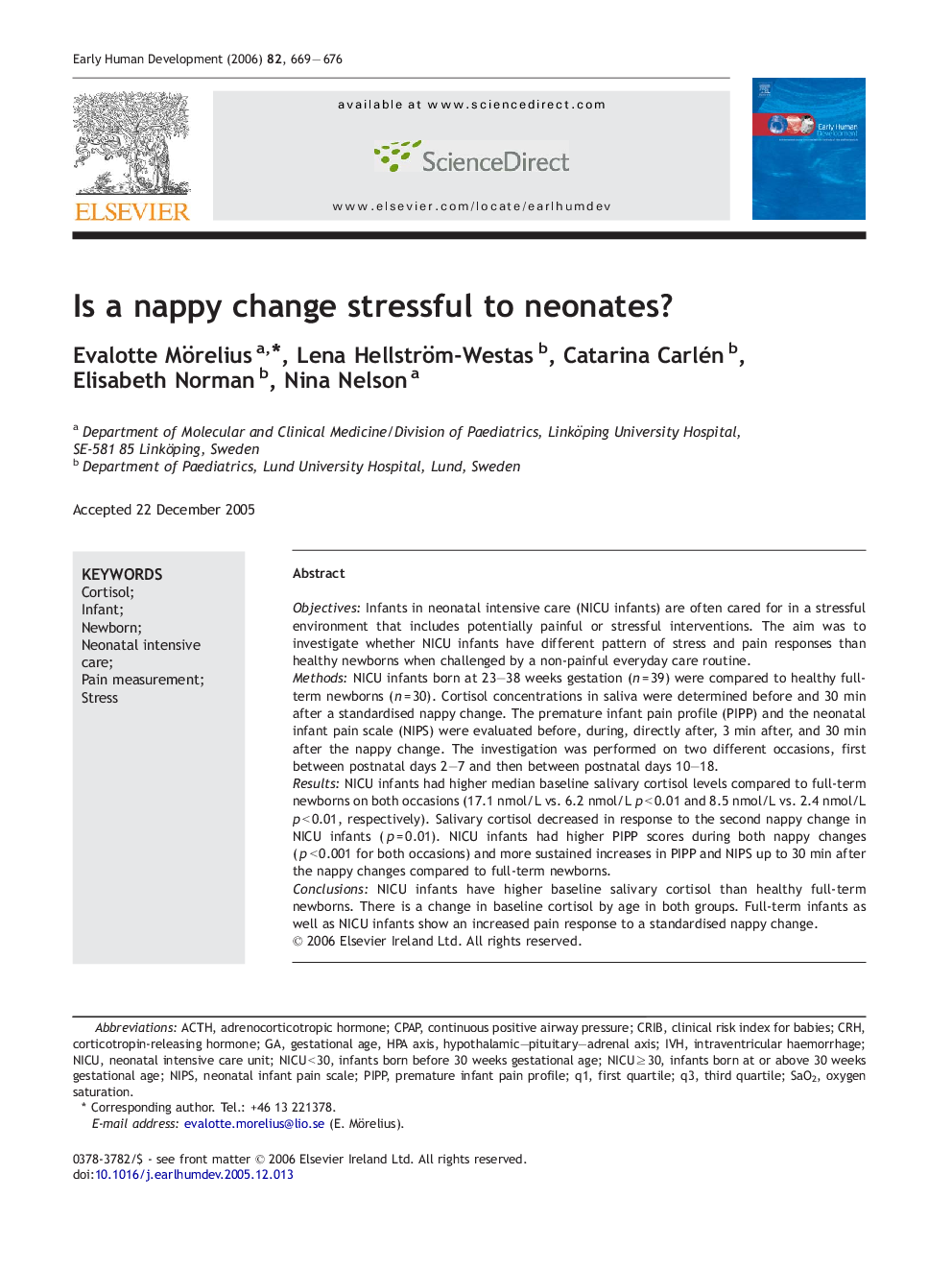| کد مقاله | کد نشریه | سال انتشار | مقاله انگلیسی | نسخه تمام متن |
|---|---|---|---|---|
| 3918358 | 1252208 | 2006 | 8 صفحه PDF | دانلود رایگان |

ObjectivesInfants in neonatal intensive care (NICU infants) are often cared for in a stressful environment that includes potentially painful or stressful interventions. The aim was to investigate whether NICU infants have different pattern of stress and pain responses than healthy newborns when challenged by a non-painful everyday care routine.MethodsNICU infants born at 23–38 weeks gestation (n = 39) were compared to healthy full-term newborns (n = 30). Cortisol concentrations in saliva were determined before and 30 min after a standardised nappy change. The premature infant pain profile (PIPP) and the neonatal infant pain scale (NIPS) were evaluated before, during, directly after, 3 min after, and 30 min after the nappy change. The investigation was performed on two different occasions, first between postnatal days 2–7 and then between postnatal days 10–18.ResultsNICU infants had higher median baseline salivary cortisol levels compared to full-term newborns on both occasions (17.1 nmol/L vs. 6.2 nmol/L p < 0.01 and 8.5 nmol/L vs. 2.4 nmol/L p < 0.01, respectively). Salivary cortisol decreased in response to the second nappy change in NICU infants (p = 0.01). NICU infants had higher PIPP scores during both nappy changes (p < 0.001 for both occasions) and more sustained increases in PIPP and NIPS up to 30 min after the nappy changes compared to full-term newborns.ConclusionsNICU infants have higher baseline salivary cortisol than healthy full-term newborns. There is a change in baseline cortisol by age in both groups. Full-term infants as well as NICU infants show an increased pain response to a standardised nappy change.
Journal: Early Human Development - Volume 82, Issue 10, October 2006, Pages 669–676